From tape recorders to audiophile electronics
Nagra is the story of Stefan Kudelski, a young engineer of Polish origin who decided to launch a portable audio recorder to finance the other industrial projects he had in mind. In 1951, the Nagra I recorder became the first of a long line. This device represented a real breakthrough innovation at the time. Handmade in Switzerland, it made cumbersome and difficult to move contemporary tape recording solutions old-fashioned. The Nagra I was the first tape and battery-powered recorder miniaturized enough to be portable. Journalists and other documentary filmmakers quickly seized on it. A single person could move around and carry out an interview and sound recording at the same time, when previously there had to be at least two people to accomplish the task. The company achieved worldwide recognition with the Nagra II and Nagra III before the end of the 1950s – so much so that the term Nagra entered common parlance for the words” tape recorder”, as with Xerox for photocopiers, the Barco brand for video projectors, Frigidaire for refrigerators or Mobylette for mopeds.
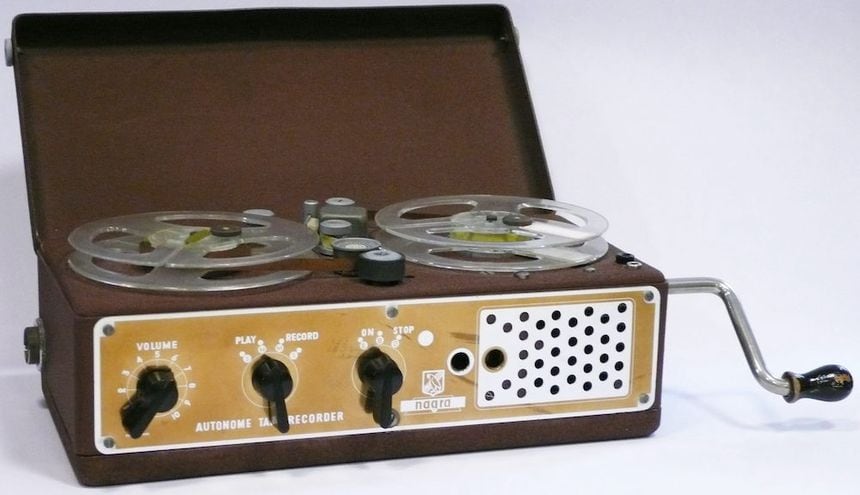
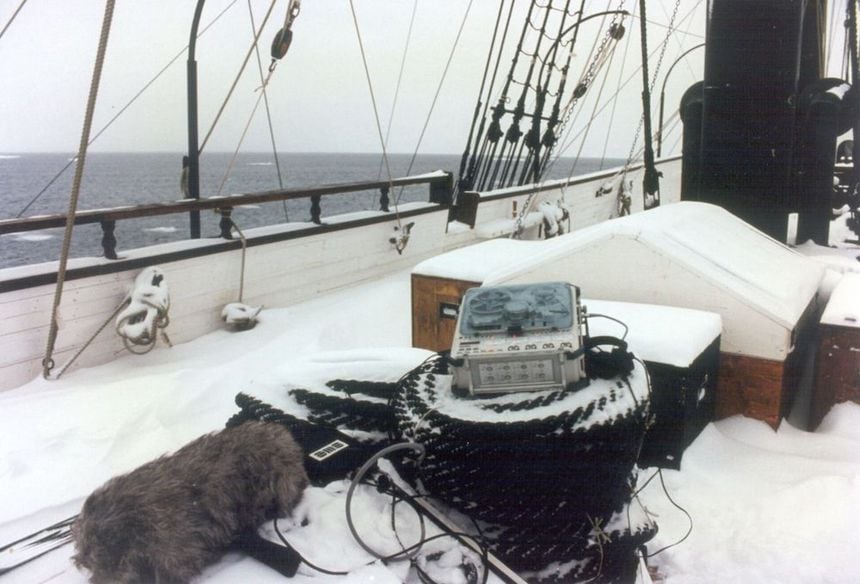
The Nagra I was, during its time, revolutionary in miniaturizing the tape format. But seen today, it appears big and heavy, as we have seen in the Nagra museum. Despite all the efforts possible with the technologies of the time, it was necessary to includes tubes, a battery and 13 cm diameter coils. The Nagra I was 30 cm wide, 18 cm side and 10 cm thick. That's the equivalent of six laptops stacked on top of each other. This did not prevent explorers from seizing on it to accompany them to the summit of Everest as well as in bathyscaphes to discover the great depths of the oceans. The Nagra I introduced the distinct style switches that can be found modernized on current Nagra HiFi devices. The famous modulometer appeared with the Nagra II recorder, as did the silver gray aluminum finish inseparable from the Nagra brand image. After the Nagra I launch many models of increasingly miniaturized analog recorders followed one after the other until the beginning of the 90s. Subsequently, Nagra adapted technologies to offer recorders with internal memory and card memory, the most recent being the Nagra Seven which includes, among other things, WiFi and 4G connectivity for transferring files from anywhere in the world.
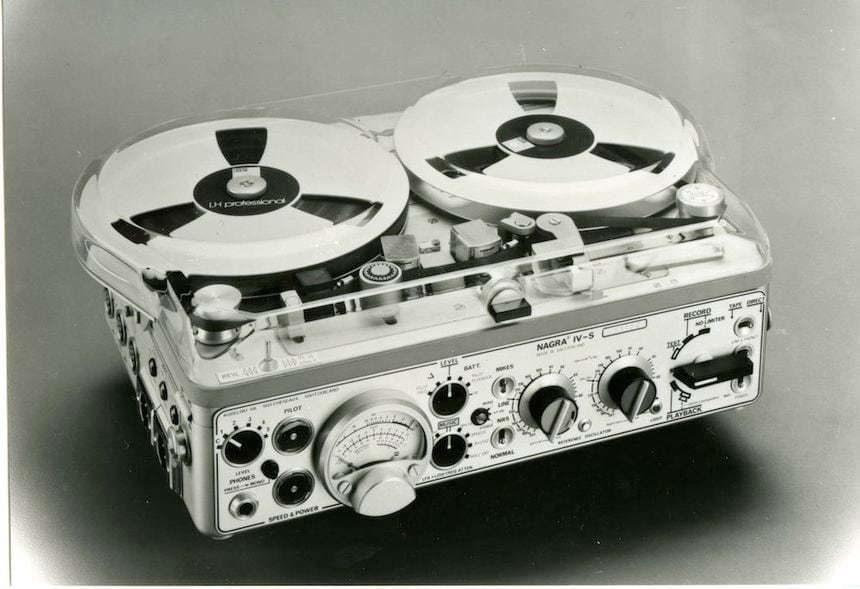
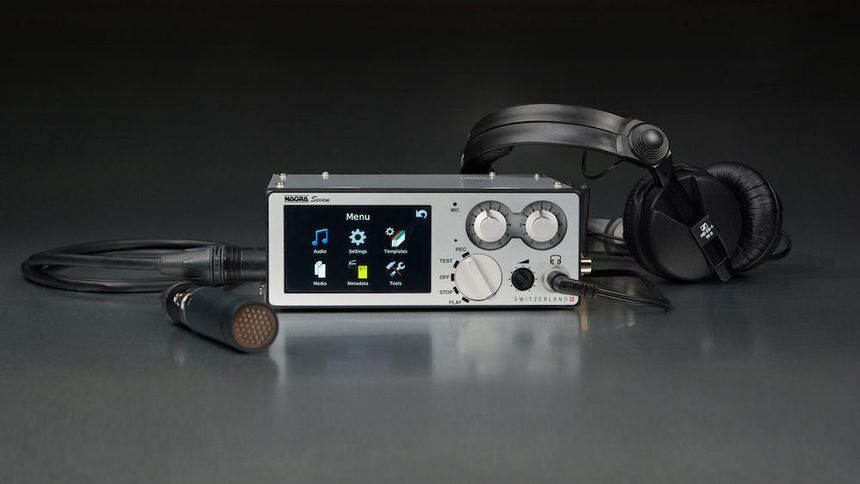
In the meantime, the Nagra company has grown enormously and moved several times around Lausanne to premises capable of accommodating the ever-increasing number of product lines. It has diversified its know-how as can be seen, for example, with the launching of encryption systems for television broadcasting, better known under the name of Nagravision. This innovation is found in Canal+ decoders as well as many other operators in more than 120 countries. Since 2012 the audio activities of Nagravision have become an independent entity, still owned by the Kudleski family and called Audio Technology Switzerland.
One of Nagra's other notable successes outside of its business as a manufacturer of professional recorders is the one that interests us most: high-fidelity. Nagra has always been a company specializing in sound. It has contributed to some of the greatest cinematographic creations and been honored with two Oscars in 1978 and 1991. It has been a historical technological partner of the Montreux Jazz Festival, where its devices have been used to immortalize concerts since 1967. With this background Nagra had all the necessary cards in hand to enter the niche of high end audio intended for residential use. This may have been expected by capitalizing on a legendary name but for long term success the results had to be there. This was accomplished straight away with the release of the PL-P pre-amplifier in 1997 to instant critical acclaim by the international press.

The PL-P laid the foundations for Nagra’s status in the high end audio industry. The device is enclosed in an aluminum frame honoring the aesthetics of the company’s recorders. The same goes for the modulometer and all the switches with their hallmark design and feel. The controls are placed on the front of a 31 cm side panel, the input/output sockets are positioned laterally. This was far from the aesthetic standards of the HiFi of the 90s, but firmly anchored in the history of the brand. Almost everything is still manufactured entirely at Nagra, with devices using numerous tubes in the signal path, custom transformers and with power supplies with buffer batteries giving way to sophisticated super capacitor supplies. The elimination of all mechanical noise was already on the agenda thanks to a main electronic boards mounted on elastomer shock absorbers. These specific characteristics are shared with almost all Nagra hifi devices since 1997.
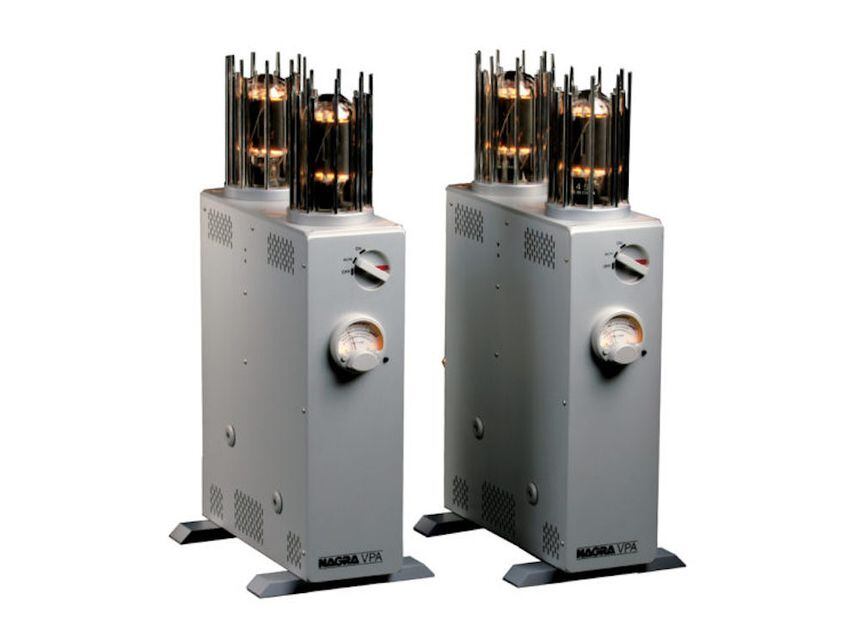
The Nagra company was part of the Kudelski group, named after its creator. However, with the diversification of the group's activities since the 2000s, the audio branch became independent in 2012, within the company Audio Technology Switzerland, which employs around forty people. It deals with professional recorders, security recorders for government and law enforcement organizations and the high-fidelity division. The latter has made a serious efforts to advance the state of the audio art utilizing a high powered research and design team combined with Swiss precision manufacturing methods. We could qualify products prior to 2012 as premium. Those currently in the catalog, that is to say a dozen products, are clearly part of the very high end with prices ranging from 12,000 euros to nearly 200,000 euros.
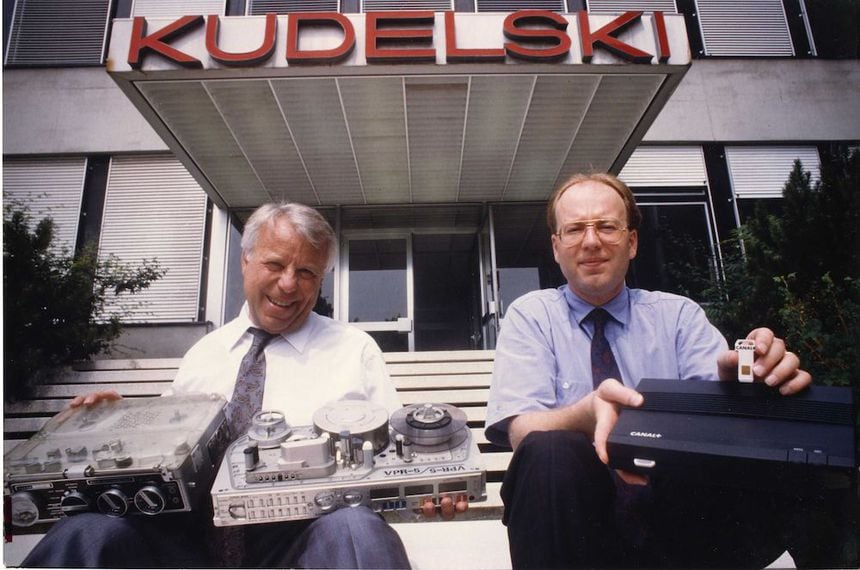
Careful craftsmanship
The mere presence of the Nagra logo cannot justify prices that some would describe as exuberant. The visit to the production unit allowed us to better understand why these audio devices fall into the ultra premium category. We noticed that we were not in a factory with robots as far as the eye can see and products coming out by the dozen at the end of the chain. The artisanal side is very present, with an organization of the stations following each stage of the manufacture until the completion of the finished products. It should be noted that the operators are multi-tasking. They are trained to be able to work in different positions and they know exactly what all their colleagues are doing. Nagra production corresponds to small series since almost everything is manufactured and assembled on site, with certain very specific parts mainly coming from local subcontractors.
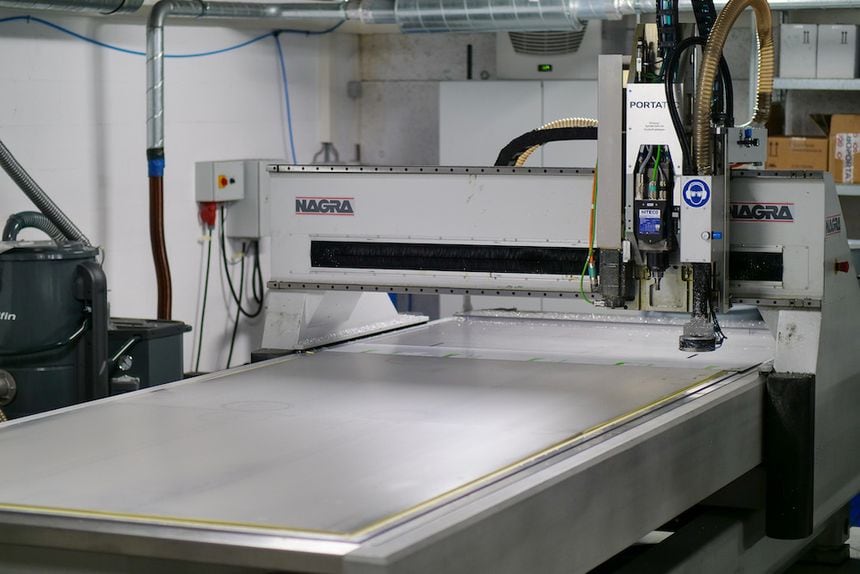
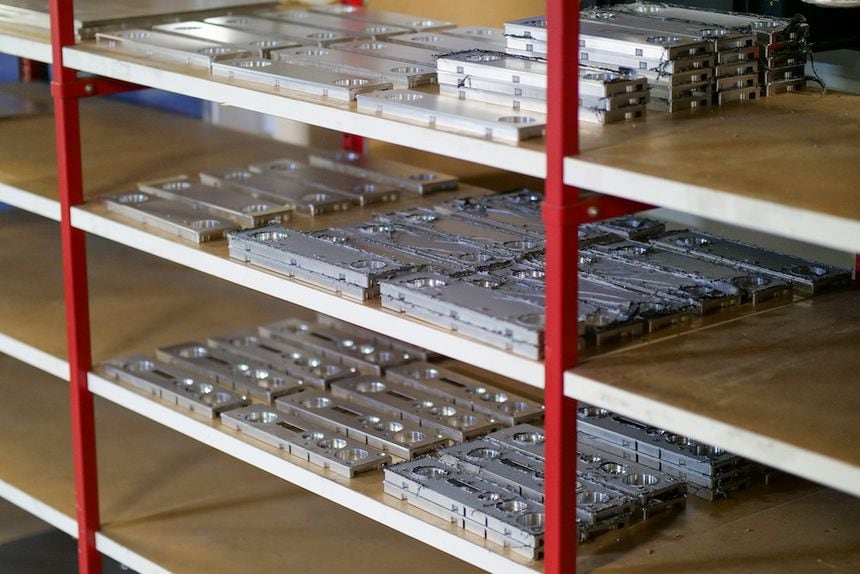
Let's start with the chassis of the devices which are made from large plates of raw aircraft grade aluminum. These first pass through a large CNC milling machine which will produce more or fewer pieces depending on their size and destination. The machining of a base plate takes a lot of time and its milling can take place over a weekend. The milling of aluminum plates is painstaking and lengthy since there are very few common parts between Nagra HiFi devices, including chassis. Although their width is identical in each of the two ranges, they are not all the same depth, the same height, they do not have the same controls and displays on the front. Once the pieces are machined, they are polished: on the one hand to soften the edges, on the other hand to obtain the characteristic lightly brushed silver finish. Once polished these parts are ready for the assembly process.
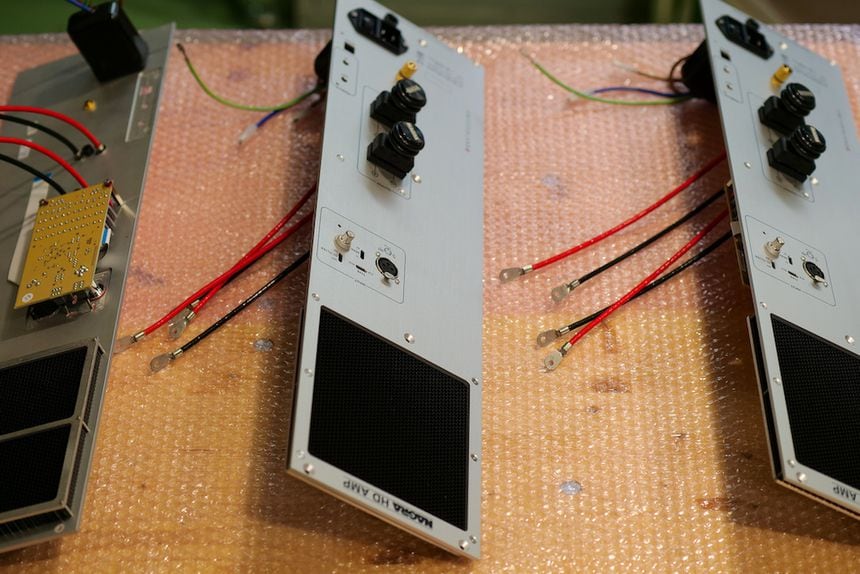
At the assembly stations, panels receiving components, controls or sockets are assembled first. These completed panels are then screwed to the others to form a final chassis and case. Assemblers work in series. They will produce, for example, ten front panels of the Nagra CLASSIC PREAMP before moving on to another product. This facilitates workflows at all levels, from the workshop to the factory supply room which provides operators with a set of similar components for the assembly of the day or the week. Some panels require much more time than others depending on the amount of components attached to them or their complexity.
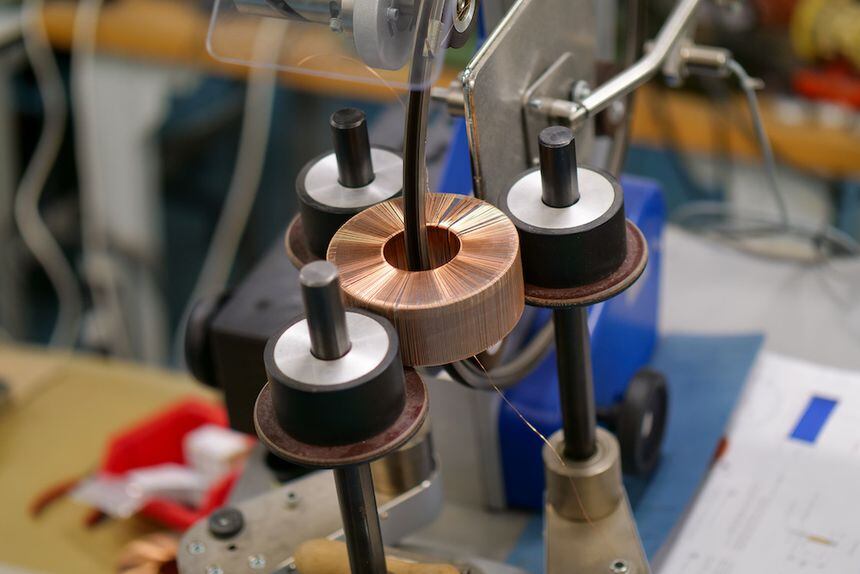
The same painstaking efforts apply to the custom made transformers used in Nagra gear. Whether small models in pre-amplifier or DAC type devices or very large units for amplifiers, all audio transformers are wound in the Nagra workshop, with only power transformers being supplied by service providers. Two operators in charge of this manufacture turn the wires with dedicated CNC winding machines, add the insulation and encapsulate them in metal boxes for some. Varying from fingertip size to very large, the most imposing weigh several kilos and will join the enormous HD AMP monoblocks alongside impressively sized capacitors, an essential reserve for high-power amplifiers. From the dedicated coil winding room these elements are transferred to the assembly workshop so that the devices can be completed.
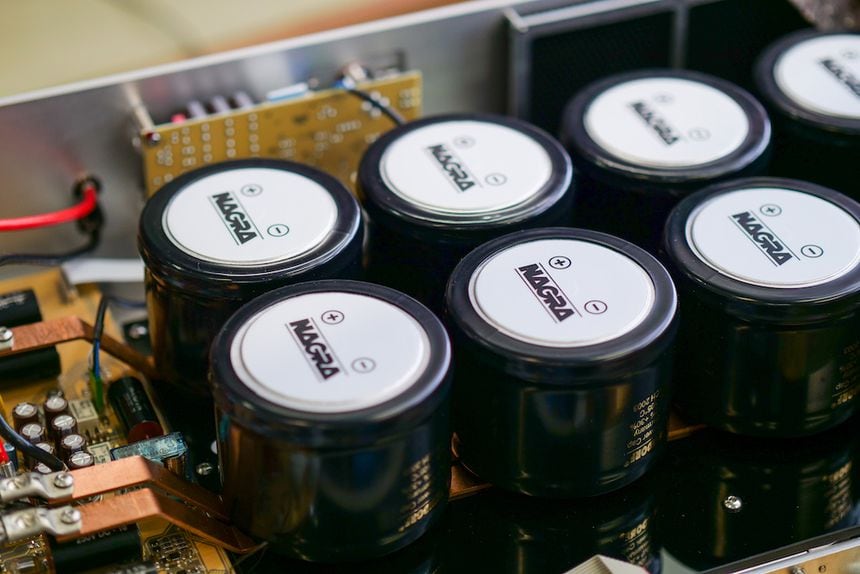
The final step is to comprehensively test each product. This confirms the concept of artisanal manufacturing, in all the positive that this term implies. Each device remains open, all that is missing is its cover, which has been temporarily set aside. Operators who specialize in this task perform many tests by connecting the device to sophisticated analyzers. Multiple points are checked to confirm that they achieve the expected performance. This long and unavoidable procedure is completed by a “burn-in” which lasts several days, serving above all to confirm that the device does not encounter any operating problems. At the end of this period, the device goes back to the test bench and its personal technical file containing the results of all the test measurements is produced. For the final validation, each device is listened to. Only after having passed all these steps successfully, can the unit leave for packaging accompanied by its comprehensive technical file.
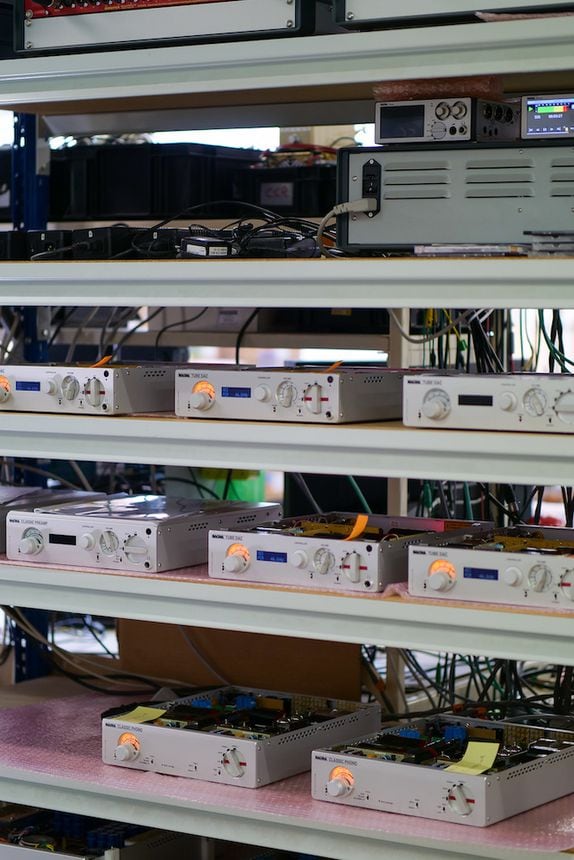
Nagra performs after-sales service for all of its production. Despite local and tailor-made manufacturing, and a ten-year conservation of parts for each reference, it may happen that certain specific components cannot be found or replaced. Apart from this type of extreme case, Nagra will be able to meet repair needs, sometimes even on devices that are several decades old. An example of longevity is found in the vacuum tubes. As noted, tubes are used in the vast majority of Nagra devices. With an expected life span of 10 years, Nagra recommends replacement once this point is reached. The company maintains a large stock of tubes each of which a have been tested and sorted according to their specific application. We were able to witness this procedure where the tubes passed through an analyzer and were “listened to” by operators through a classic Nagra DSM portable loudspeaker.

HiFi Nagra product ranges
Nagra currently offers two series of components: the CLASSIC and HD lines. The CLASSIC line consists of six products: the CLASSIC PREAMP, TUBE DAC, CLASSIC PHONO , CLASSIC INT integrated amplifier and the CLASSIC AMP power amplifier. The PREAMP, DAC and PHONO are complemented by an available external Classic PSU whose chassis is aesthetically identical to the other devices. This device can provide an enhanced power supply for up to three elements among pre-amps, DACs and old CD players now discontinued. Also available are Nagra designed and produced vibration free (VFS) support platforms. These double aluminum support plates combined with use specific isolation pods are placed under the products of the CLASSIC range in order to decouple them from the furniture or dedicated stands or racks that house them. Depending on the component placed atop, two different isolation types of material are available as required by the specific component utilized. These VFS isolation platforms minimize any mechanical vibration that could harm the signal and delicate musical information passing through each device. This is especially important with devices employing tubes in the signal path.

The HD line is more limited in offerings, but even more upscale. The HD line is the ultimate expression of Nagra innovation. The core technical design of the devices is generally quite close to the CLASSIC line but in a larger format. Taking vibration isolation even a few steps further than the VFS supports, HD products are complemented by a substantial support structure incorporating special isolation material and resting on four large decoupled feet. Whether it is the HD PREAMP or the HD DAC X, they are both presented in two chassis where the power supply is separate isolated unit. The Nagra HD AMP is comprised of two reference mono units each with a power rating of 250 Watts at 8 Ohms and up to 1000 Watts under very low impedance loads. The first 30 Watts of power are pure Class A operation. The HD AMP was designed to power any speaker on the market, even the most demanding. Each vertical format amp of the pair is 64 cm high and weighs 56 kg.
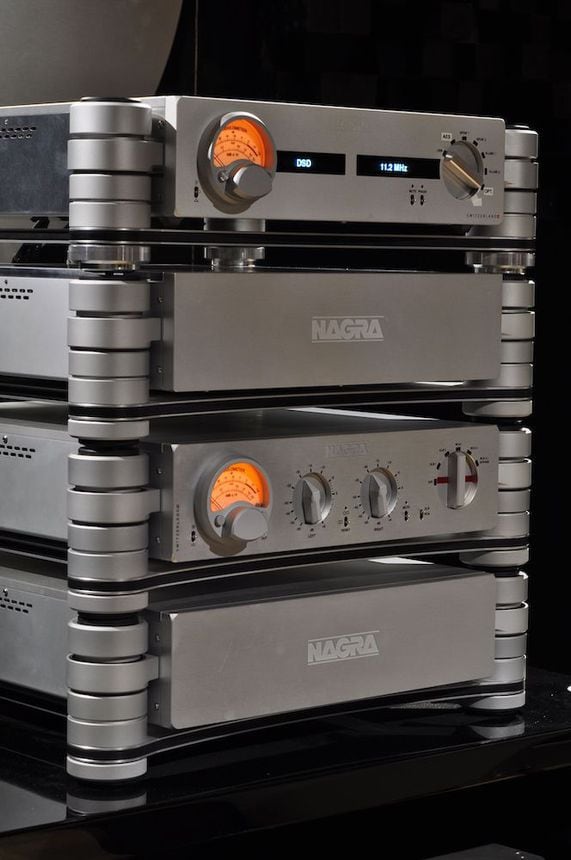
Listening in auditoriums
On the occasion of its 70th anniversary, Nagra has decided to mark the milestone with an uncompromising analogue playback product: the Reference Anniversary turntable/tonearm system. Once again, after four years of extensive research and development, Nagra has pushed the edge of the audio arts with this product. An attempt to catalog the concepts, features and execution of this 90 kg design would require an entire article well beyond the scope of the present. Obvious highlights are the sophisticated mechanical and hydraulic four tower suspension system permitting vibration damping in three dimensions, a platter CNC machined from Exium, a space age alloy utilized for its unique vibration damping properties in a Mars seismic activity mission, carbon fibre unipivot tonearm and a massive separate chassis supercap power supply. The 70th Anniversary REFERENCE TURNTABLE will soon be complemented by a new HD level phono stage and a Nagra first – reference level phono cartridge.
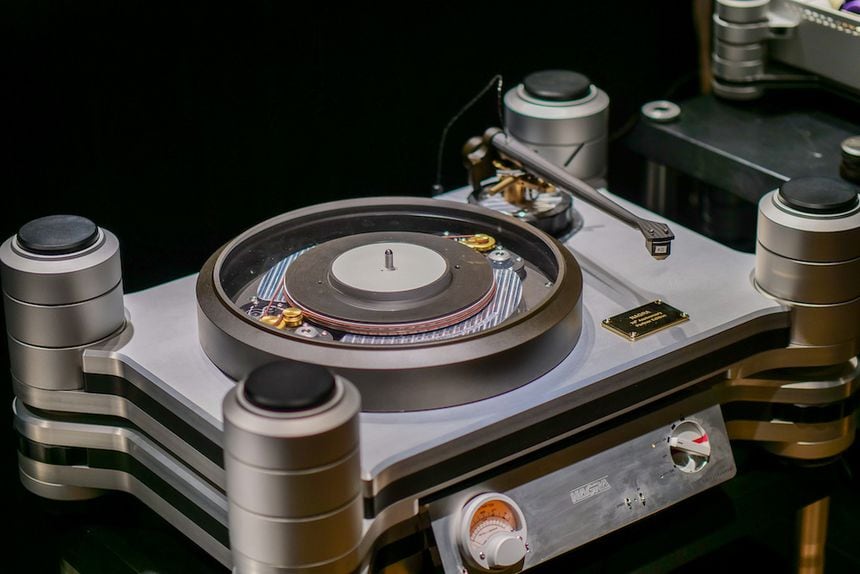
Any serious high end audio manufacturer will allot precious factory space to a dedicated listening room. Nagra has two. The first, the largest, is built on the principle of the box within the decoupled box. The proportions are ideal, as is the placement of the seats for listening. Acoustic treatment is omnipresent. This room includes all the elements of the HD series including the 70th Anniversary Reference turntable/tonearm system. For the moment, the digital source is a dedicated PC running Roon as a Nagra designed streamer is in the final stages of research and development. Nagra maintains a stable of high-end speakers from top level manufacturers including Wilson Audio, YG Acoustics and Rockport Technologies. Currently, the main listening room system utilizes Rockport Cygnus speakers. Our listening experience in this room began with several special LP’s, including a one step pressing of the classic album Blood Sweat & Tears and jazz with Charles Lloyd in trio. The listening was incredible in terms of warmth, presence and dynamics. Rarely have we been so close to reality when listening to a hifi system in terms of reproduction of timbres. The 70th Anniversary reference turntable/tonearm system certainly extracts a maximum of information from the minute grooves of LP’s, all the while honoring the musical talents and intentions generated by the artists in the recording session. It is an experience that deserves to be lived, even though we will not mention the overall price of this installation, which amounts to several hundred thousand euros. We continued by playing our usual test playlist in Hi-Res Qobuz via Roon. Streaming is different with a sound much further back from the speakers, less projected but just as holographic. There is a feeling of less heat but even more precision and overall openness. This is the case when listening to Marcus Miller's bass on his album Free which is realistic in its attack, roundness and string resonances, just like the harmonica which rises delicately high in the treble.
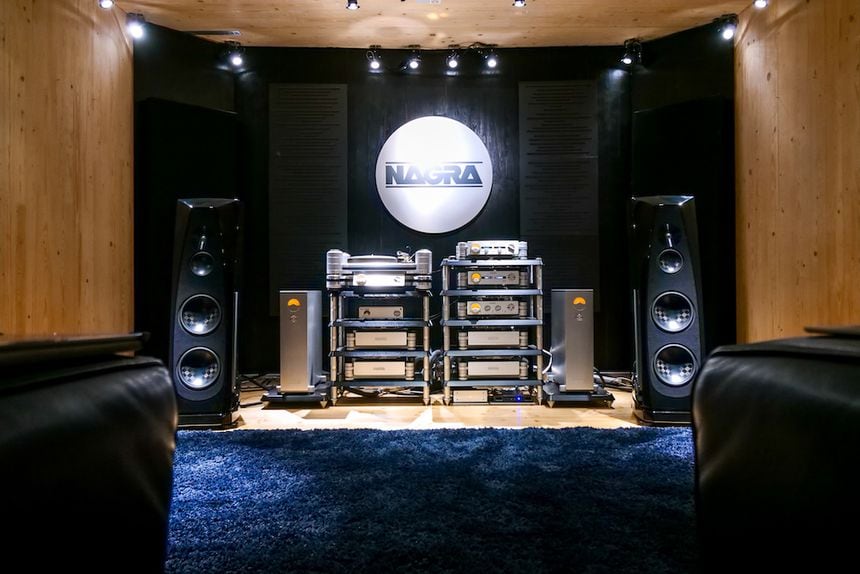
As mentioned, Nagra has several pairs of loudspeakers from renowned manufacturers of the same stature as Nagra electronics. They can move from one auditorium to another as needed. In the second room, the CLASSIC series was in operation. Smaller, this auditorium also serves as a studio with the appropriate equipment as well as a drum kit on which Nagra/Audio Technology Switzerland’s Audio Division Director plays. In this listening space Wilson Audio Sasha DAW speakers are each powered by a CLASSIC AMP. The source is either a tape player or a CD player, both Nagra. The speakers are roughly in the middle of the room in its length, but the sound stage is established well behind to make them disappear completely. We were able to listen to Christine and the Queens as well as tape recordings from the Montreux Jazz Festival dating from the very first editions. The sensation of presence was such that it would be almost impossible to differentiate the CD medium from the magnetic tapes. We found the resolution a little rounder and more intimate than in the large auditorium, but not devoid of nuance and realism in the timbres with a nice 3D effect both in depth and in verticality. Once again, Nagra electronics impressively partner with equally competent loudspeakers.
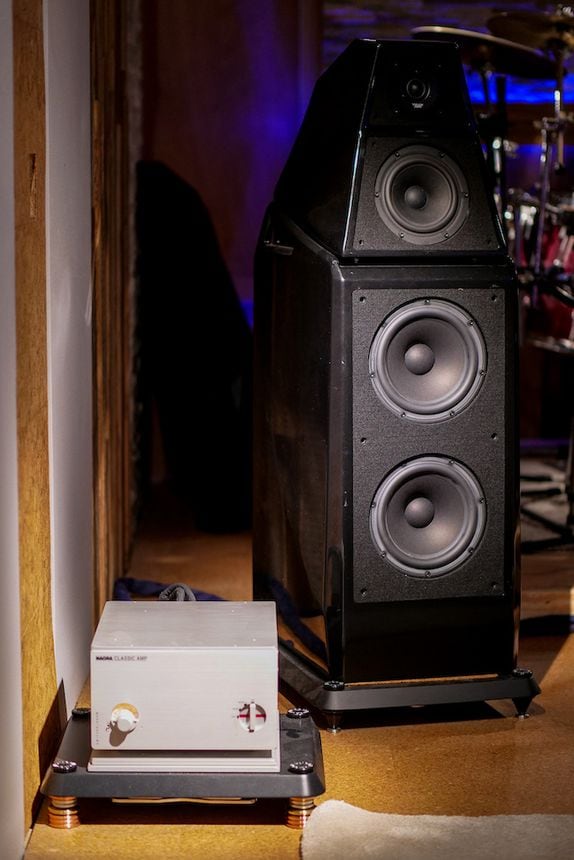
In conclusion, we can only invite you to listen to Nagra's product line-up, either at trade shows dedicated to HiFi or at your dealer. The cost of entry into this level of gear is not insignificant. Nevertheless, the quality of sound and the assurance that each product has been meticulously built like the most beautiful Swiss watches or luxury English cars contribute to the desire to one day own a Nagra device in one’s high-fidelity chain. Once Nagra’s streamer is introduced the circle will be complete.